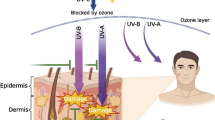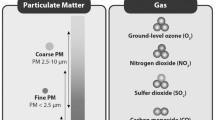Abstract.
Objectives: A literature review on studies in humans, applying physiological methods to monitor environmentally induced reactions in eyes and upper respiratory tract. The focus was on chemical exposures, but other occupational factors and indoor exposures were included. Methods: Original articles were gathered from Medline until November 2000, combined with peer-reviewed publications from other sources. Results: Ocular methods included measurement of tear film break-up time (BUT), blink frequency, detection of corneal damage, by vital staining, and cells or inflammatory markers in tear fluid. Nasal methods included acoustic rhinometry, rhinostereometry, and nasal peak expiratory flow. In addition, nasal lavage with isotonic sodium chloride solution was applied to measure concentrations of leucocytes, or biomarkers of secretion or inflammation in nasal lavage fluid (NAL). Most occupational studies were on nasal effects of organic or inorganic dust. There were few studies on occupational exposure to organic solvents or chemical irritants. Some studies demonstrated associations between ocular and nasal physiological response and the indoor environment. Finally, there were some exposure-chamber studies on effects of specific volatile organic compounds (VOCs). Little is known about adaptation at repeated ocular or nasal exposure to irritants. Conclusion: Physiological measurements can be valuable complements to symptom registration, but there is a need for standardised investigations. There is a lack of studies on ocular and nasal physiological responses in relation to specific chemical compounds. Experimental studies, with repeated exposure and longer follow-up time on biomarkers, are needed. Finally, there is a need for longitudinal epidemiological studies to elucidate if observed effects should be interpreted as variation within normal physiology, or as early signs of impaired ocular and respiratory health.
Similar content being viewed by others
Author information
Authors and Affiliations
Additional information
Electronic Publication
Rights and permissions
About this article
Cite this article
Norbäck, .D., Wieslander, .G. Biomarkers and chemosensory irritations. IAOEH 75, 298–304 (2002). https://doi.org/10.1007/s00420-002-0314-8
Received:
Accepted:
Issue Date:
DOI: https://doi.org/10.1007/s00420-002-0314-8




